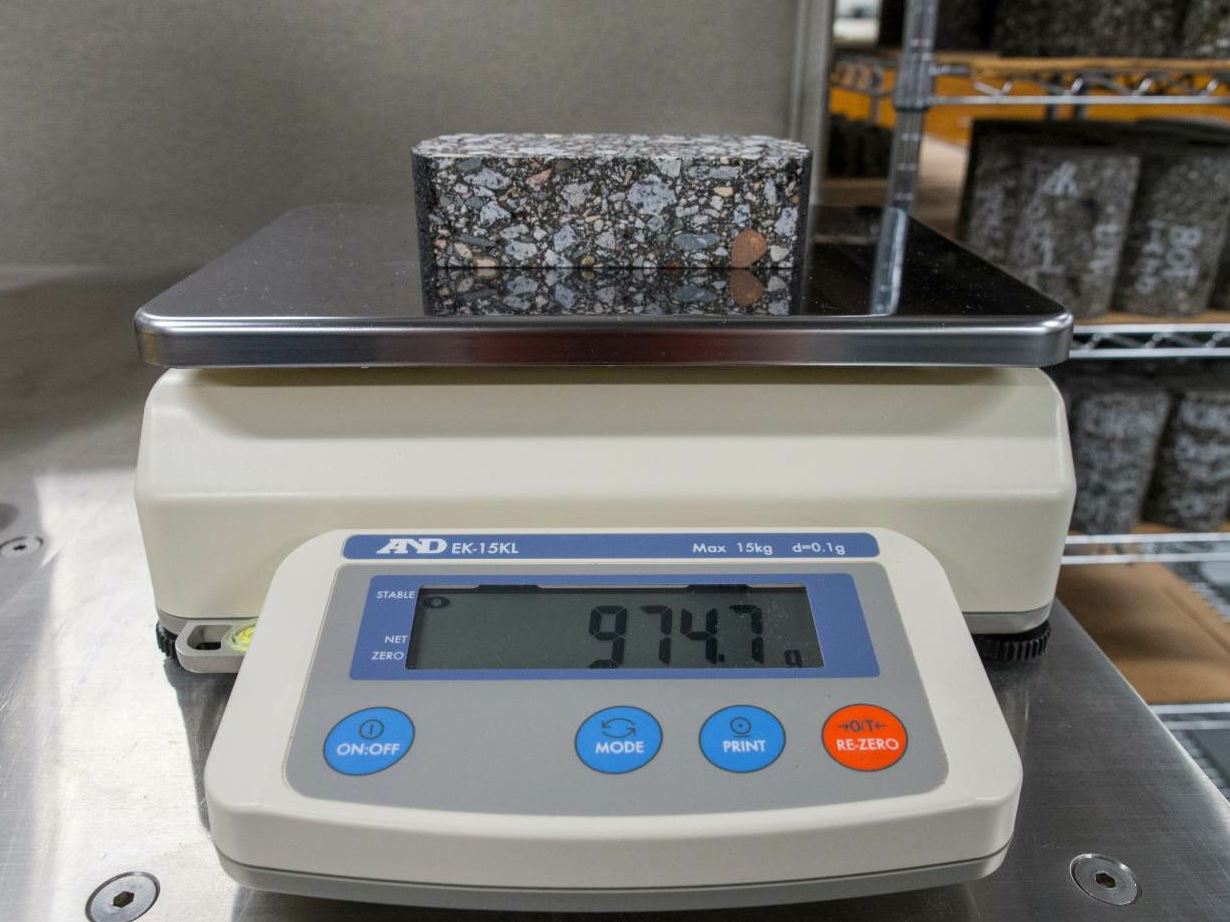Calibrate Your Lab Equipment on Schedule
BY Sandy Lender

Having lab equipment in proper calibration gives you a better chance at proper measurements and testing results. Dan Ridolfi of Lastrada Partners, El Dorado Hills, California, stated the calibration and maintenance of lab equipment is just as important as the calibration and maintenance of the asphalt and aggregate equipment at the plant. “A producer never wants to be in a position of producing material with unknown properties,” he shared.
This begs the question of how often a lab tech needs to calibrate equipment. How often does lab equipment “fall out” of calibration or run the risk of giving poor results? Not all pieces require the same level of scrutiny.
For example, the North Dakota Department of Transportation spells out, at the end of its documentation for performing bulk specific gravity (Gmb) calculations, “A calibration check of the equipment should be performed annually as a minimum, or whenever damage or repair occurs.”
Gmb = [A/(B-C)]
A = weight in grams of the specimen in air;
B = weight in grams, surface dry; and
C = weight in grams, in water.
This is information the experienced lab tech will recognize.
Considering bulk specific gravity calculations require weights be recorded to the nearest 0.1 gram, and the results be reported to the nearest 0.001 pounds per cubic foot, instrumentation (the balance and suspension apparatus, specifically) has to be on the mark. It has to be calibrated correctly. Jason Moore at the National Center for Asphalt Technology (NCAT) in Auburn, Alabama, shared: “Scales may not be the most glamourous piece of lab equipment, but are very important. Every sample tested in the lab has more than likely been on a scale at least once before testing.”
A starting point for other equipment is the American Association of State Highway and Transportation Officials (AASHTO) guidelines. Ridolfi explained that AASHTO R 18 describes the minimum calibration requirements for certain pieces of equipment.

“Accredited and non-accredited labs should use R 18 as a starting point for calibration frequencies,” Ridolfi recommended. “The document also requires maintenance be included in the schedule of calibrations, but doesn’t provide guidance for maintenance frequency. The amount of use will dictate the maintenance cycle. Things with wear parts, like a Gilson™ shaker, need to be lubricated regularly. When I was in charge of a lab, we lubricated Gilson shakers weekly.”
The point, of course, is to get consistent test results. Finch Troxler of Troxler Electronic Laboratories Inc., Research Triangle Park, North Carolina, pointed to the importance of monitoring older equipment for its consistency. “Really anything over 10 years old with regular use should be calibrated two times a year,” Troxler recommended. “There’s just one piece of lab equipment that should be calibrated semiannually. Gyratories should be calibrated one to two times a year and every time it is moved from one location to another.”
Ridolfi explained: “Tests that are prone to variation need more frequent calibrations to maintain consistency across tests. Gsb and Gmm tests are prone to higher variation. The volume measures for these tests should be calibrated frequently, especially when weather changes. Although many labs calibrate them annually or semiannually, I recommend calibrating them daily because of the high potential for variability in the test.
As discussed in this month’s Mix It Up department, the Superpave gyratory compactor (SGC) requires periodic calibration. Take a look at how to perform AASHTO T 312 (density test) according to the Oklahoma Highway Construction Materials Technician Certification Board.
“Sieves are required to be calibrated twice a year per AASHTO R18,” Ridolfi continued. “Fines sieves wear out quickly, so it’s a good idea to hold fines sieves up to a light to visually inspect them at the start of the day to see if the holes are plugged.
“You should let your experience guide your calibration and maintenance frequency. Each test relates to the previous tests and other tests on the same sample. Watching test results as a pool of results, and not just individual tests, will help you identify equipment that needs attention between calibration cycles. When something seems ‘not right’ relative to previous tests or other tests on the same sample, that is a good time to check your equipment,” Ridolfi concluded.
The testing equipment outside the lab also needs calibration to ensure consistent and reliable results. Robyn Myers of Troxler Electronic Laboratories discussed the frequency of asphalt and soil density gauge calibration. Gauges should be calibrated annually to remain in compliance with the applicable Association of State Testing and Materials (ASTM) standards (D6938 and D2950 in particular).
“Troxler also recommends this frequency as it ensures that the gauges are performing as expected,” Myers said. “When calibrated by a Troxler authorized service center, the gauges are also cleaned and lubricated, wear parts replaced, software updates installed, and electronic components checked for any issues. Regular maintenance is always a good idea for equipment such as this that most users rely upon daily.
Heavy use of the nuclear gauges would not cause them to require more frequent calibration; the calibration is mainly to account for the source decay, which is related to the passing of time. However, heavy use may cause the gauge to require cleaning, greasing and wear part replacement sooner.”
Whether in the lab or in the field, quality control/quality assurance personnel can use standards from AASHTO and ASTM as the starting point for calibration basics, but no one has to settle with the minimum. As experts indicate herein, achieving consistent, reliable testing results may require more frequent calibration and maintenance depending on ambient conditions, equipment type and age, and other factors. Let these ideas guide you and don’t hesitate to call on lab experts for extra guidance.
You can order AASHTO R 18-18 from Techstreet here or from AASHTO directly here.
